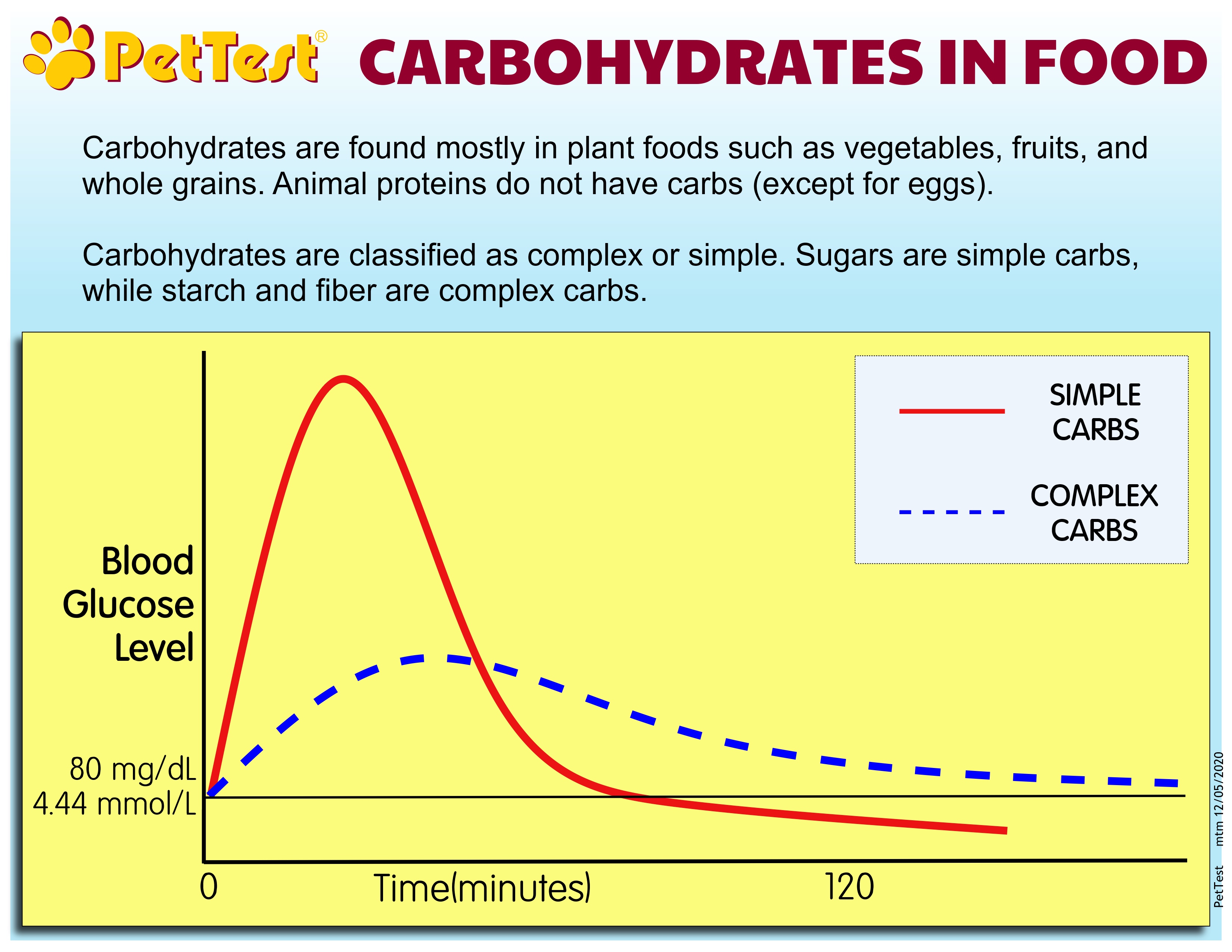Carbohydrates - Simple and Complex
Today, I would like to talk about simple and complex carbs in foods for our diabetic dogs. These are two important things to pay attention to with diabetic dogs that I did not really understand when I started this diabetic journey.
When it comes to treating Type 1 diabetes, there are some differences between dogs and humans. We cannot monitor our dogs constantly, they cannot tell us when their blood glucose is high or low, we do not treat with interval insulin, and we control what they eat and when.
In a healthy non-diabetic’s body, when glucose levels rise, the pancreas releases insulin to get glucose to feed cells. Since our dog’s pancreas is faulty and no longer produces insulin, we give insulin every 12 hours. This helps the body work with the glucose it produces.
Feeding a low to moderate
amount of complex carbs is recommended and it is important to keep their carb intake
consistent to get their blood glucose levels to target range. Safe target range for blood glucose levels is
100 – 250 mg/dL (5.5 – 13.8 mmol/L).

SIMPLE CARBS
Simple carbs elevate blood glucose levels and are absorbed into the blood stream quickly. Simple carbs can be absorbed as soon as the digestion process begins, and they can be absorbed through the gums. Anything sweet (fruits, certain vegetables, sugars), white rice or refined grains like white flour (white bread, pastas) are all considered simple carbs.
COMPLEX CARBS
Complex carbs slowly release into the blood stream over a period, so there is less of a BG spike. Grains, legumes, starches, and vegetables are complex carbs. These are considered good carbs. The fiber in complex carbs also aids in slowing down the absorption of complex carbs.
There are vegetables, like peas and carrots are higher on the glycemic index, this means that they have a higher amount of sugars (simple carbs) and will spike blood glucose levels faster. We try to stay away from simple carbs or foods that are higher on the glycemic index.
Some diabetic dogs have additional health issues which requires eating higher carbs: chronic pancreatitis, certain liver diseases, kidney disease, allergies or sensitivities, should all be taken into account, and most of the diets for the above issues are higher in carbs. The good thing about diabetes is that we can adjust insulin to match carb intake.
There are dogs that are very picky eaters and will only eat a food that is higher in carbs, or we need to change food up to keep them interested. If you need to rotate foods for your pup, rotate vegetables, or animal protein. Feeding a dry food should always be the same thing and the same amount since dry food has complex carbs in it.
We also must think of budget restrictions as well. Do not fret if you cannot afford $60 per month in dog food, many people with diabetic dogs are on budget, just remember what I said above, we can adjust insulin to match carb intake.
Food can be one of the most confusing parts of caring for our diabetic dogs. All of the information can seem confusing and overwhelming. My hope is this blog helped with some of the confusion and if you have more questions please start a conversation below.
If you are looking for a community to join for support, Diabetic Dog Owners and Canine Diabetes Support and Information can be found on Facebook as well.
For more conversations, photos, and giveaways check out PetTest on Facebook and Instagram.

